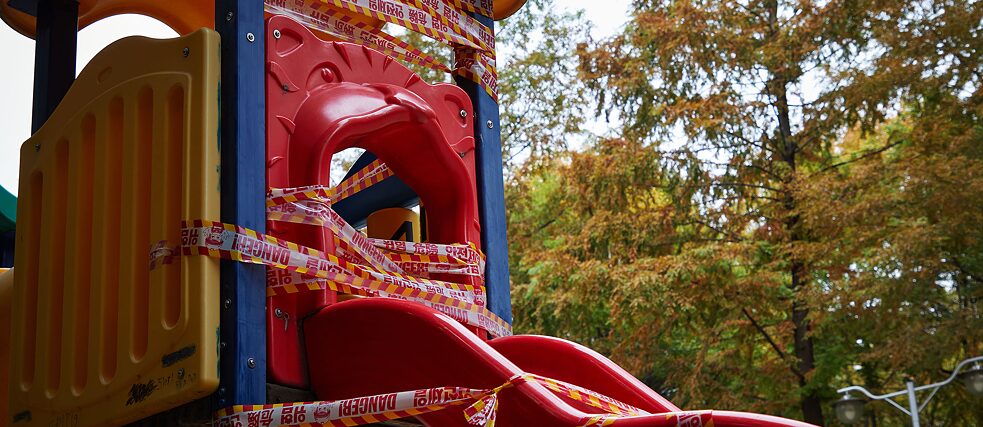The Situation of Children and Adolescents in South Korea
“We should not ignore the difficult conditions”

Children and young people have suffered the most from the effects of the pandemic so far. How has the life of children in South Korea during the corona pandemic changed and how can there be equal opportunities for all? An interview with social worker Jinhee Sunwoo.
By Minjee Kum
The South Korean Good Neighbors Children Rights Research Centre has conducted the “2020 Study on Children’s Reaction to Catastrophe”, surveying 3,375 South Korean children and teenagers aged four to eighteen as well as their parents. We spoke with Jinhee Sunwoo, social worker at Good Neighbors Children Rights Research Centre, who took part in conducting the survey, about the impacts on the education and social lives of South Korean children and about possible solutions.
How have the lives of children and adolescents changed since the beginning of the corona crisis?
Jinhee Sunwoo: As the contact between people has become restricted, social policies that used to support the education, protection and care giving of children and adolescents, failed to function properly. This has especially affected the diet of children. Many have started to eat poorly since they are increasingly skipping meals or turning to convenience products and fast food. They are also facing difficulties in their studies because their schooling is now taking place online.
Disputes with parents or care takers are also becoming more frequent, as children usually spend their free time on their smartphones or playing computer games. And due to the increased stress levels that parents or care givers face because of the school situation and the new responsibilities at home, children and teenagers are also experiencing various forms of violence at home and online. To summarise, the South Korean youth is experiencing a loss in education and care, facing mental problems, and having their basic rights to a carefree childhood and adolescence, to opportunities for advancement and participation in society curtailed.
The problem of lack of childcare has become more serious.
Jinhee Sunwoo
Jinhee Sunwoo: Before the pandemic, in 2018, the average sleeping time of South Korean children and teenagers amounted to 7.6 hours, whereas in 2020, it has increased to 8.3 hours. However, this development can only be seen as a positive phenomenon to a limited extent. That is because it has become difficult for the young to keep a regular daily routine in their lives, due to schools closing doors and conveying lessons remotely. As children are staying at home more and not in public institutions, they naturally sleep longer, especially when their care givers are busy with work themselves, so that they don't have time to wake their children up. As a result, they get up later, which causes an irregular day and night rhythm.
Due to the corona crisis, the problem of lack of childcare has become bigger. What problems did this cause for children and adolescents?
Jinhee Sunwoo: Since the pandemic, children stay much more at home, and care givers need to stay with them to help with schoolwork - an unprecedented situation for many families. Families with two working parents have to look for relatives or other people who could watch their children. Low-income families can end up having to leave their child unattended at home the whole day. In other words, the problem of lack of childcare has become more serious. The results of our study show: 0.5 per cent of preschoolers aged up to seven years answered that they are without a care giver throughout the week. For children aged seven to ten in primary school (grades one to three) in 2020, when the study was conducted, this was 4.5 per cent; for children aged ten to thirteen of the grades four to six, this was 15.5 per cent; 22.7 per cent of thirteen- to sixteen-year-olds in middle school and 29.1 per cent of high school students aged sixteen to nineteen were at home alone. The absence of adults leads children and adolescents missing out on meals. Before the pandemic in 2018, 50.1 per cent of all children had three meals a day, whereas after the emergence of COVID-19 in 2020, only 35.9 per cent did, which means that two out of three children have experienced missing meals.
The performance gap is widening.
Jinhee Sunwoo
Jinhee Sunwoo: According to the survey, the lower the income of a family is, the bigger the lack of childcare becomes, and the more problems like missed meals have been reported. Furthermore, parents with a decreased income due to the pandemic or who belong to a low-income group, appear to have difficulties supporting or monitoring their children’s online schooling and the hours that these children spend on extracurricular lessons or studies are shown to be much less. As an aftermath of the pandemic, the education system in South Korea has been badly affected and the educational gap, which has been there before, became more severe. This is a great drawback for those children who come from educationally disadvantaged backgrounds.
What can be done about this situation that many children find themselves in and how can there be equal opportunities for all?
Jinhee Sunwoo: According to the result of the Ministry of Education’s 2020 evaluation of academic achievements, it was shown that the proportion of children with an underdeveloped basic education has drastically increased compared to 2019. On a governmental level, hard work needs to be done to make up for the defect in the schooling and to strengthen the children’s academic abilities. This includes that families, schools and communities must be linked together tightly at a local level, so that the children who have been isolated due to the pandemic can get the education, care and protection they need. Areas like mental stability, social relationships, leisure and fun need to be supported and strengthened comprehensively.
In response to the results of the evaluation of academic achievements, in June 2021 the South Korean Ministry of Education drafted a plan titled “school education improvement plan”, which includes tailored schooling, support for recovery of psyche and sociability and special support measures for disadvantaged social classes. It should be our goal not to ignore the severe situation in which our children and adolescents currently find themselves, but rather to find solutions to improve it.
Interviewee
Since 2017, Jinhee Sunwoo works as social worker at Good Neighbors Children’s Rights Research Centre where she conducts studies for the improvement of children's rights and welfare. She is currently working on studies on children's lives during the corona pandemic and will continue to conduct the study on children's reactions to disasters in 2021.
